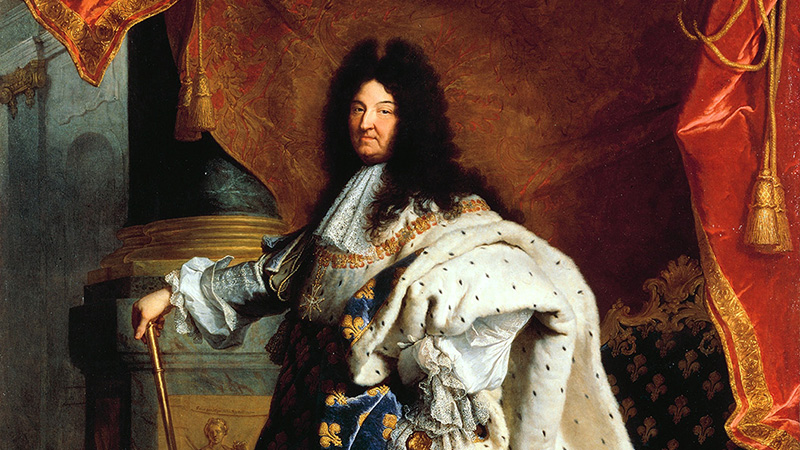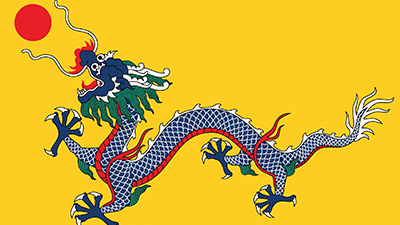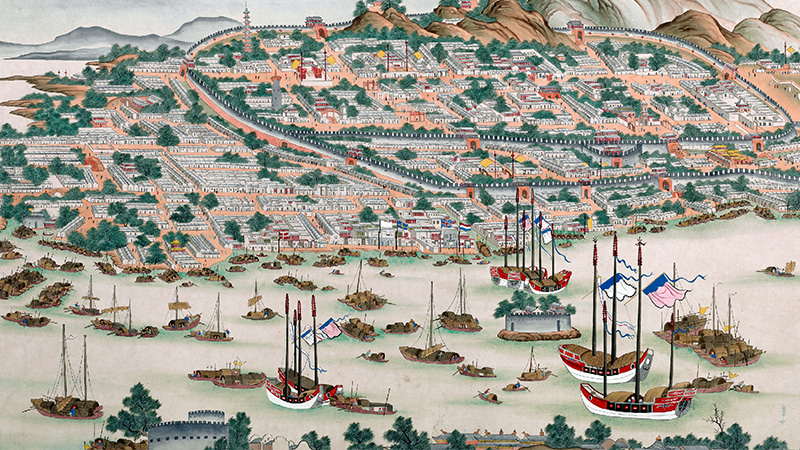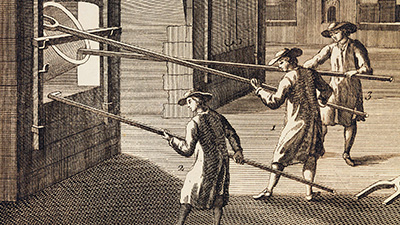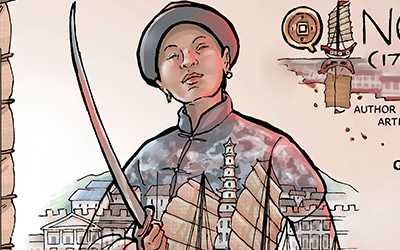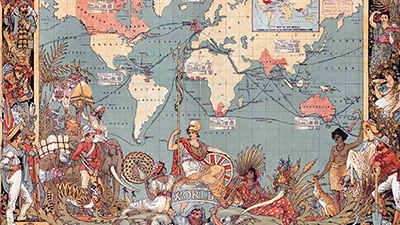Comparing Europe and China in 1750
Teacher Resources
Driving Question: How were eighteenth-century Europe and China similar and different?
We know that there were huge changes taking place around the world in the mid-eighteenth century. Comparing two regions very far from each other—Europe and China—gives us a variety of useful perspectives. These perspectives allow us to evaluate the changes and continuities that people experienced during this tumultuous period.
Learning Objectives:
- Compare how states in eighteenth-century Europe and China were organized, traded with others, and made and shared goods.
- Practice quick sourcing to evaluate the similarities and differences between eighteenth-century Europe and China.
- Use a graphic biography to support, extend, or challenge the overarching narratives of this period.
Vocab Terms:
- aristocrat
- colony
- commerce
- empire
- monarch
- peasant
- social mobility
Opener: Comparing Europe and China in 1750
To teach this lesson step, refer to page 3 of the Lesson 1.5 Teaching Guide.
If you were picking out gifts to bring to the Emperor of China, you’d probably put a lot of thought into it. Look at the gifts an eighteenth-century British ambassador decided on—what can you hypothesize from this gift list?
Gifts from the West Slideshow
A Tale of Two Powers
To teach this lesson step, refer to page 3 of the Lesson 1.5 Teaching Guide.
Keeping ancient empires straight can be tricky! Our Reading Guide offers strategies to help readers track and make sense of articles like these.
In 1750, China and European empires were changing rapidly as they adapted to new ideas, increasing interconnections, and growing populations. Learn how these empires ruled, and then compare them head-to-head in an Eighteenth-Century Battle Royale.
-
Guiding Questions
-
Before you read
Preview the questions below, and then skim the article. Be sure to look at the section headings and any images.
While you read
Look for answers to these questions:
- What changed and what stayed the same in Europe in the 1700s?
- What types of rulers governed the European continent?
- How were the economic systems in Europe beginning to drive social change?
- Why did eighteenth-century Russia seem like a contradiction?
- Why did Catherine the Great institute the Toleration of All Faiths Edict?
After you read
Respond to this question: Why do you think many European rulers embraced Enlightenment thinking while also maintaining that they had a divine right to rule?
-
Guiding Questions
-
Before you read
Preview the questions below, and then skim the article. Be sure to look at the section headings and any images.
While you read
Look for answers to these questions:
- Why did Manchu rulers in China impose their own kind of dress code?
- How did the Qing rule over a huge, diverse country and keep it unified?
- How did the Qing use their imperial power to influence the economy through agriculture?
- What was China’s relationship with global trade in this period?
- How did the merchant class grow much larger and become powerful both socially and politically? How did Qing rulers react to this new power?
After you read
Respond to these questions: What impact did the Qing Dynasty have on trading networks in the 1700s? Did this impact the whole world evenly?
Boom or Bust: Economics in 1750
To teach this lesson step, refer to page 5 of the Lesson 1.5 Teaching Guide.
Our Sourcing One-Pager shares approaches that will help students analyze historical documents—check it out!
Deepen your comparison of Europe and China through an analysis of primary and secondary sources using the quick-sourcing approach.
The Lord and the Pirate Queen
To teach this lesson step, refer to page 6 of the Lesson 1.5 Teaching Guide.
There’s a lot for students to tackle in this lesson step! For support, check out this blog post on keeping students engaged with video, or visit the OER Project Community to see how other educators approach teaching with video.
The global economy in 1750 was rapidly changing as European powers rose. But older powers like China remained dominant. The stories of Lord Macartney and Qing Shih—both mariners, but quite different otherwise—help illustrate the picture of the global economy in 1750.
-
Guiding Questions
-
Before you read
Preview the questions below, and then skim the article. Be sure to look at the section headings and any images.
While you read
Look for answers to these questions:
- How were most things made around 1750? Who made them, and in what kinds of situations?
- What groups of people didn’t make physical objects?
- What does the author mean when he says this was an “Asian Age”?
- How did Europeans begin to dominate shipping during this period?
After you read
Respond to these questions: Do you think it’s more valuable for a region to mainly produce goods (like Asia in 1750) or export goods (like Europe in 1750)? Why?
-
Guiding Questions
-
Before you watch
Preview the questions below, and then review the transcript.
While you watch
Look for answers to these questions:
- Why was Portsmouth important?
- Where was the economic center of the world at the end of the eighteenth century?
- Why were Europeans more interested in trade with China than the Chinese were in trade with Europe?
- What roles did European powers in the Indian Ocean (other than Britain) play in the global economy?
- Why did Lord Macartney travel to China?
- Did Macartney succeed? Why or why not?
After you watch
Respond to these questions: Based on what you know about China and Britain in 1793, which do you think would become the economic powerhouse of the nineteenth century? Why?
Key Ideas
-
Guiding Questions
-
Before you read
Preview the questions below, and then skim the comic, paying attention to things like prominent colors, shapes, and types of text and fonts. How do you know where to start and in which direction to read? What’s in the gutters (the space between panels)? Who or what is the focus of the comic?
While you read
Look for answers to these questions:
- How and why did Qing Shih get to Guangzhou?
- What was Guangzhou like in 1775?
- How did Qing Shih become a pirate queen?
- How did Qing Shih strengthen the pirate confederacy? What policies did she pursue?
- The artist shows Qing Shih at the edge or toward the back of panels at the beginning of the biography, but by the end, she is in the middle and front of each panel. What message is the artist giving through this placement?
After you read
Respond to the following questions:
- In what ways are the stories of Qing Shih and Lord Macartney similar?
- In what ways are they different?
Closer: Comparing Europe and China in 1750
To teach this lesson step, refer to page 8 of the Lesson 1.5 Teaching Guide.
They may seem short and informal, but closer activities like this are essential for reinforcing student learning. Check out the Openers and Closers Guide for helpful tips!
Take one more look—literally—at Macartney’s visit to China. Using your understanding from this lesson, analyze two illustrations of this meeting.
Expanding Networks of Production and Distribution
To teach this lesson step, refer to page 8 of the Lesson 1.5 Teaching Guide.
Get out the yarn! Explore how our networks have changed from 1450 to today—from silk to iPhones.
Competing Narratives of History
To teach this lesson step, refer to page 13 of the Lesson 1.5 Teaching Guide.
Many narratives of world history ask the question, Why did Europe become so powerful after 1750? This article explains why many world historians have been asking the wrong questions.
-
Guiding Questions
-
Before you read
Preview the questions below, and then skim the article. Be sure to look at the section headings and any images.
While you read
Look for answers to these questions:
- How has the study of and teaching of history changed in the last 50 years?
- Why did McNeill think that the West should be the focus of a more global history?
- Why did McNeill write “The Rise of the West after Twenty-Five Years,” a follow-up article to his book? What did McNeill admit he got wrong?
- What other ideas were also being questioned about the influence of the West from the eighteenth through the twentieth centuries?
- What are the problems with only focusing on the contributions of the West?
After you read
Respond to the following questions:
- Why did the focus of history start to shift after the 1960s?
- Why do you think this has been an important step in forming a truly global history?












